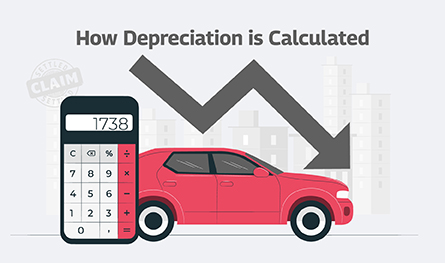A Guide on How is Child Insurance Different from Term Insurance
.png)
When we become parents for the first time, along with a heap of joy, also comes the responsibility to take care of our child. From choosing the best available diapers for them to doing our research on the kind of homemade food that we can feed our child, we leave no stones unturned. As the child grows up, we make sure that their future is safe, even if anything unfortunate happens to us. While securing the future, we mostly go for two options, either a term insurance plan or a child insurance plan. And even after buying any one of these, we are not sure if we have done enough for our little ones. To understand things better and clear all our doubts, what can be better than discussing both of these options? Here we have outlined the differences between a term insurance plan and a child insurance plan.
.png)
What is Term Life Insurance Plan?
Term insurance is one of the life insurance products which you can buy for the financial security of your family in your absence. And since it secures the financial future of your family, your child is included too. In an event where the policyholder dies within the term insurance policy tenure, a lump sum amount is offered to the nominee of the plan. The premiums payable under a term insurance plan are much more affordable as compared to the other types of life insurance products. This kind of plan can be bought at any stage of life and a policyholder can even customize the plan, as and when required. To get even more benefits, policyholders can even buy riders by paying an additional premium.
What is Child Insurance Plan?
A child insurance plan is an investment as well as a life insurance cover. This is one of the most sought-after plans that is opted by parents for the security of their children’s future. Child insurance contains two components such as investment and life insurance. Therefore, the life insurance component helps in securing the financial future of the child in case of the death of the parent; and the investment component helps in covering the education cost or marriage expenses of the child, depending on the returns earned.
Term insurance vs Child insurance – Major Differences
For more clarity, let us discuss some of the key differentiators between both of these insurances.
1. Premiums
The premiums that have to be paid under a child plan totally depend on the chosen coverage and the benefits. The insurance provider continues investing in the child insurance plan even after your demise. On the other hand, term insurance plans are known for their affordability. To get an estimate of the premiums, you can even use a term insurance calculator, which is easily available online. After the sudden death of the policyholder, the nominee is offered a lump sum amount by the insurer.
2. Sum assured
Upon the death of the parent, their children get a lump sum benefit under a child policy. Likewise, even in a term insurance policy, a lump sum benefit is paid to the nominees of the policy.
3. Partial withdrawals
Under your child insurance plan, you will be able to make partial withdrawals. However, under a term insurance policy, you will not be allowed to make a partial withdrawal. Only if you have a critical illness cover and you are diagnosed with one such illness, you will get a lump sum amount from the insurance provider. The money you get from there can be used for your treatment and hospital bill payments.
4. Payouts
As the payouts are concerned, under a child plan, the children receive money at specific intervals. Under a term insurance plan, the only payout is the death benefit received by the nominees.
5. Tax benefits
You can claim a tax deduction of the premiums that you pay for child insurance under Section 80C of the Income Tax Act. And the benefit received from the policy under Section 10(10D) of the Income Tax Act, 1961 is tax-free. The term insurance tax benefit is exactly the same as the child plan; the only difference is in the critical illness cover. You can get a tax deduction under Section 80D of the Income Tax Act, 1961 when you have a critical illness cover.
List of Top Child Insurance and Term Insurance Plans 2022 in India
Here we mention some of the best and most sought-after child insurance plans as well as term insurance plans that you can find in India.
Some of the top term insurance plans that you can go for in the country are:
- Max Life Smart Secure Plus Plan
- Bharti AXA Life Flexi Term Plan
- Pramerica Life Tru-Shield Plan
- LIC Tech Term Plan
- Exide Life Smart Term Edge
- ICICI Pru iProtect Smart Term Plan
- Kotak Term Plan
- Bajaj Allianz Life Smart Protect Goal Term Plan
- HDFC Life Click 2 Protect Life
- SBI Life Smart Shield
Best child insurance plans in India
A few of the child plans in India that you can totally trust are:
- Bharti AXA Life Child Advantage Plan
- HDFC Life Youngstar Super Premium Plan
- ICICI Pru Smart Kid Solutions
- Kotak Head Start Child Assure Plan
- Bajaj Allianz Young Assure Plan
- Max Life Shiksha Plus Super Plan
- Birla Sun Life Vision Star Plan
- LIC New Children Money Back Plan
- Aegon Life Rising Star Insurance Plan
- Future Generali Assured Child Education Plan
You can compare these plans and then make an informed decision that best suits your family’s needs. No matter which plans you choose, it is going to provide benefit to your family when you are not around anymore.
Term Insurance vs Child insurance
Child insurance is a type of life insurance policy that provides financial protection for children in case of the policyholder's death. It typically includes a savings component, which can be used to pay for the child's education or other expenses. On the other hand, term insurance is a life insurance policy that provides coverage for a specified period or term, usually ranging from 1 to 30 years. It is designed to provide financial protection for the policyholder's beneficiaries in case of their untimely death.
Child insurance is primarily designed to provide coverage for the child in case of the policyholder's death. It also includes a savings component, which can be used to pay for the child's education or other expenses. On the other hand, term insurance provides coverage for the policyholder's beneficiaries in case of their death during the term of the policy. It does not include a savings component.
Child insurance policies typically have higher premiums compared to term insurance policies. This is because child insurance policies include a savings component, which increases the overall cost of the policy. Term insurance policies, on the other hand, have lower premiums because they only provide coverage for a specified period.
Child insurance policies offer both death and maturity benefits. The death benefit is paid out in case of the policyholder's death, while the maturity benefit is paid out when the policy matures. The maturity benefit can be used to pay for the child's education or other expenses. Term insurance policies, on the other hand, only offer death benefits. The beneficiaries receive the death benefit in case of the policyholder's untimely death during the term of the policy.

Author Bio
Paybima Team
Paybima is an Indian insurance aggregator on a mission to make insurance simple for people. Paybima is the Digital arm of the already established and trusted Mahindra Insurance Brokers Ltd., a reputed name in the insurance broking industry with 21 years of experience. Paybima promises you the easy-to-access online platform to buy insurance policies, and also extend their unrelented assistance with all your policy related queries and services.
Other Life Insurance Products
Latest Post
.jpg)
Having a bike is not just about convenience, it’s a huge responsibility. Financial protection of your two-wheeler is important and the best way to ensure that is to have a bike insurance policy that will protect you in case of an accident, theft or a natural calamity. There are so many options when it comes to policies, making it difficult to know what’s best. This guide makes it easier to choose the best bike insurance policy that is suitable for you.


Non-linked, non-participating term plans are the ones that do not participate in the business and profit of the insurance company. These are fixed premium plans where the policyholder pays a fixed amount to ascertain a guaranteed sum as a return to be paid to the nominee in case of his/ her demise. Let’s learn more in this post.


Car depreciation implies the difference between the cost of a car at the time of buying the car and when you sell it. A car insurance claim amount is determined by the car depreciation rate. The car depreciation rate is the reduction in the value of your car over its lifespan caused by wear and tear.


Have you ever caught yourself lost in illusions about your daughter's future events, such as her university convocation and first day at work? Her university convocation. When she embarks upon her initial job after graduation will be the day.

.png)
Accidents can happen anywhere, anytime, by your own fault or another person. What’s important is to be prepared for such mishaps. This is where Own Damage Car Insurance comes in handy.




